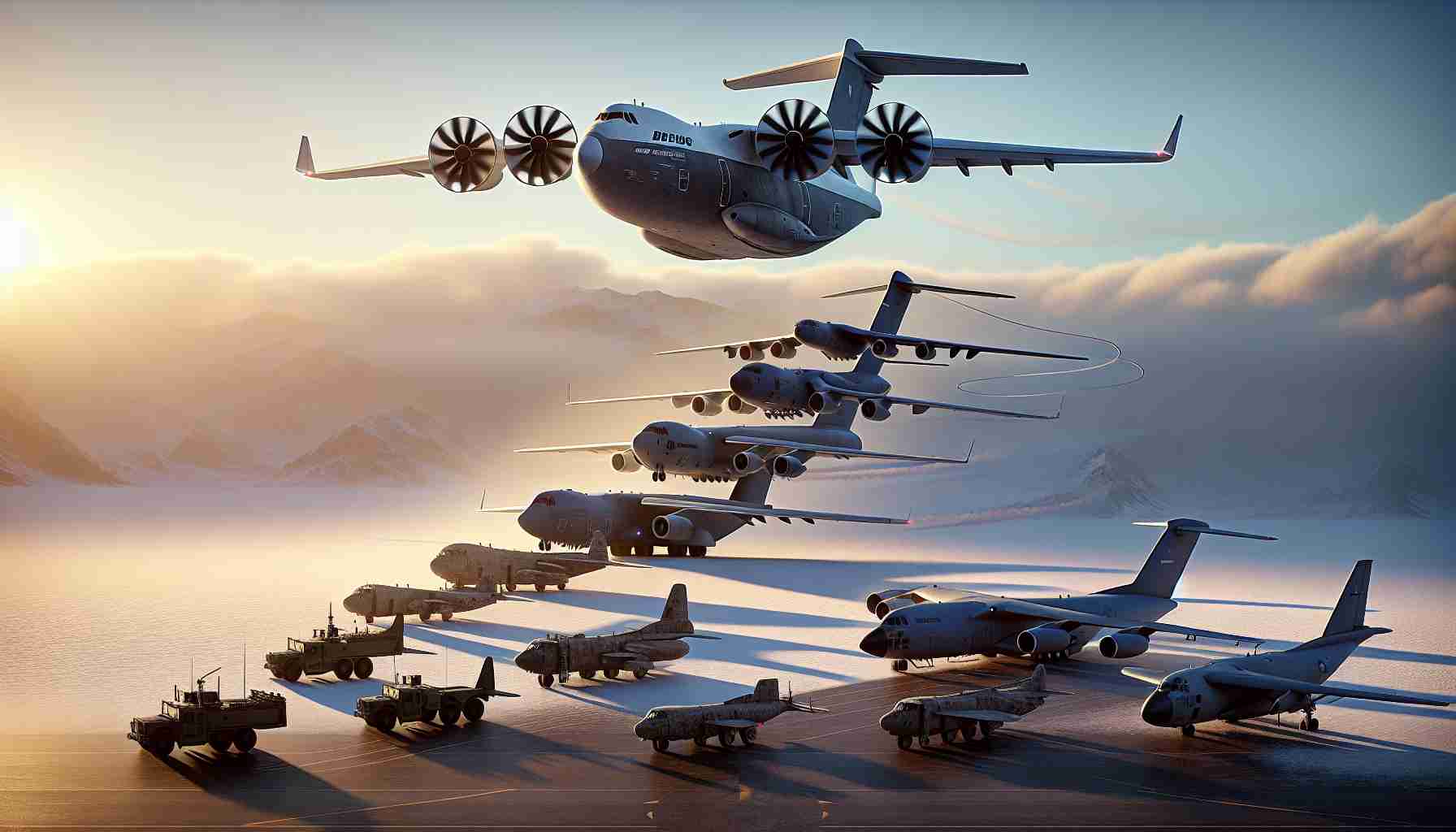With a rich history spanning over a century, Boeing stands as a formidable entity in the aerospace industry, particularly in military aviation. The company’s journey began with an emphasis on crafting military aircraft, dating back to World War I, and it has since established a reputation for innovative designs and technologies.
The partnership with the U.S. military has yielded various remarkable aircraft, including the C-17 Globemaster III, known for its reliability and versatility. This long-standing collaboration has also paved the way for advancements in space exploration, notably the Boeing Starliner project developed in conjunction with NASA.
Among Boeing’s impressive offerings are its helicopters, which have showcased equally cutting-edge technology. One notable model is the MH-139A Grey Wolf, which has effectively replaced the older UH-1 Huey fleet. This helicopter has made strides in operational efficiency, reportedly saving the U.S. Air Force around $1 billion. Its multi-role capabilities include search and rescue along with medical evacuation, making it a vital asset.
Another significant aircraft is the AH-64E Apache, a staple in combat aviation since 1984. Its deployment in key military operations, such as Desert Storm, highlights its enduring legacy. The Apache has seen extensive upgrades, incorporating advanced avionics and weaponry that enhance its effectiveness in various combat scenarios.
Boeing’s adaptability and innovation in both fixed-wing and rotary-wing aircraft continue to shape the future of military aviation.
Recognizing Boeing’s Evolution in Military Aviation
Boeing’s influence in military aviation is not just confined to legacy aircraft; it encompasses a rich tapestry of innovation, technological advancement, and strategic partnerships that have redefined aerial combat and supply chain logistics. Over the decades, Boeing has transitioned from World War I biplanes to sophisticated unmanned systems, firmly establishing its position as a leading manufacturer in this sector.
Key Questions Surrounding Boeing’s Military Evolution
1. What are the recent advancements in Boeing’s military aircraft technology?
– Boeing has been focusing on integrating artificial intelligence (AI) and advanced data analytics to enhance aircraft performance and interoperability. The development of technologies such as the Loyal Wingman drone, which utilizes AI to work alongside manned aircraft, illustrates this trend.
2. How has Boeing addressed sustainability in military aviation?
– In recent years, Boeing has incorporated sustainable aviation fuels (SAF) and focused on reducing the carbon footprint of its military aircraft. The company is exploring hybrid-electric propulsion systems that promise to deliver enhanced efficiency and lower environmental impact.
3. What controversies have arisen from Boeing’s military contracts?
– Boeing has faced scrutiny over delays and cost overruns in various military projects, notably the KC-46 tanker program. Issues such as technical malfunctions and supply chain disruptions have sparked debates regarding management efficacy and accountability.
Key Challenges and Controversies
Boeing’s trajectory in military aviation has not been without challenges. The transition toward unmanned aerial vehicles (UAVs) raises questions about the ethical implications of drone warfare and automation in combat situations. Furthermore, competition from other aerospace giants has intensified, prompting Boeing to innovate more rapidly and aggressively.
The company has also grappled with public perception following the 737 MAX crisis, which has raised concerns about overall safety and reliability. Boeing’s military segment needs to work diligently to rebuild trust among stakeholders while addressing criticism over transparency and corporate governance.
Advantages and Disadvantages of Boeing’s Military Innovations
Advantages:
– Technological Leadership: Boeing continuously pushes the envelope in aerodynamics, avionics, and materials science, thereby maintaining a competitive edge in military aviation.
– Comprehensive Portfolio: From cargo planes to fighters to advanced helicopters, Boeing provides a range of platforms that cater to the diverse needs of military operations.
– Partnerships and Collaborations: Strategic alliances with military organizations and defense contractors foster innovation and expedite project timelines.
Disadvantages:
– Cost Escalation: Many military projects have experienced significant budget overruns, causing strain on military budgets and raising concerns about fiscal responsibility.
– Public Scrutiny: Ongoing controversies about safety and reliability affect Boeing’s reputation, potentially impacting future military contracts.
– Dependence on Government Contracts: A significant portion of Boeing’s revenue stems from government contracts, making it vulnerable to shifts in defense spending policies and priorities.
Conclusion
Boeing’s evolution in military aviation showcases a blend of historical significance and forward-looking strategies. As it navigates challenges and capitalizes on innovations, Boeing is poised to redefine the future of military flight. The company’s commitment to sustainability, advanced technology, and collaboration with defense entities will play crucial roles in its ongoing legacy.
For further reading about Boeing’s military developments and innovations, visit Boeing.












